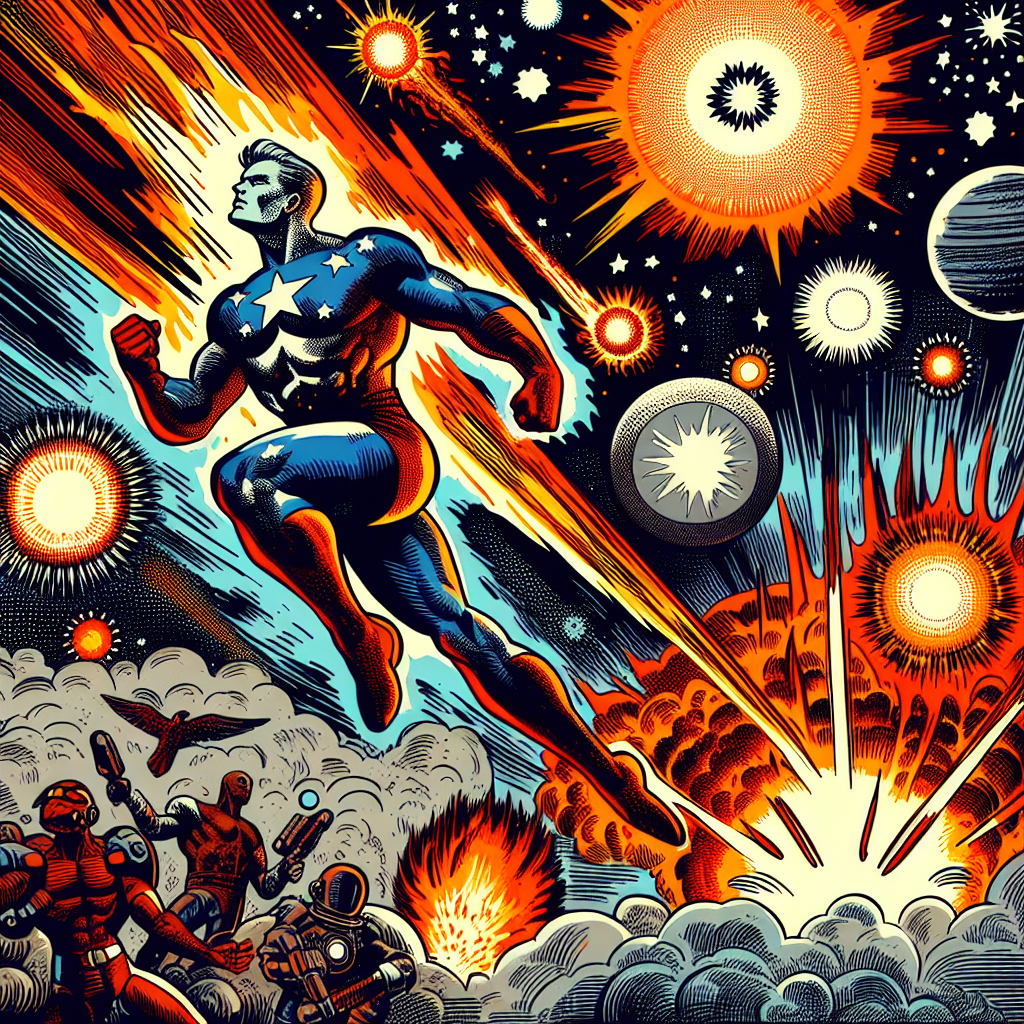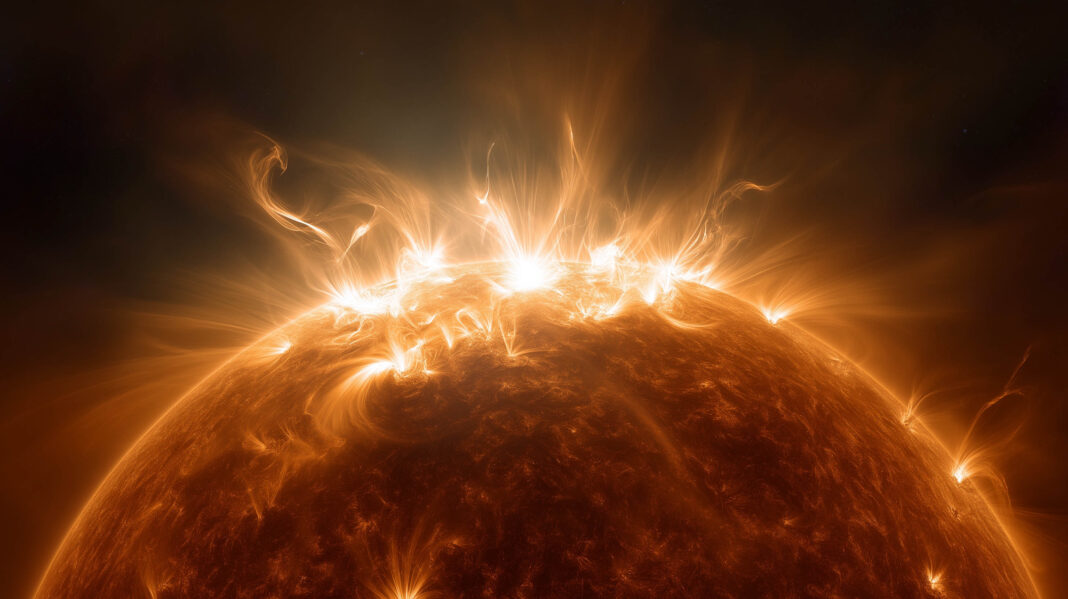The Cosmic Tug-of-War
Picture a colossal gas planet locked in a cosmic wrestling match with its star. That’s the drama unfolding 407 light-years from Earth, where HIP 67522 b orbits its young star, igniting flares that dwarf our sun’s tantrums. This isn’t just a celestial curiosity—it’s a first in the astronomy playbook. The planet’s proximity to its star is causing these cosmic fireworks, possibly stripping away its atmosphere.
The culprit? The planet’s dance with the star’s magnetic field. As it twirls, it whips up waves that travel to the star’s outer layers, triggering these massive flares. The star, HIP 67522, is a young, fiery beast—much like a teenager with a short fuse. It’s slightly heftier than our sun, adding to its explosive personality.
A Star’s Fiery Temperament
HIP 67522 isn’t your average star. It’s a youthful 17 million years old, a mere toddler compared to our solar system’s 4.5 billion years. This star and its planets are practically newborns, yet they’re already making headlines. HIP 67522 b, with a diameter almost matching Jupiter but only 5% of its mass, is one of the puffiest exoplanets known. Imagine a giant ball of cotton candy orbiting five times closer to its star than Mercury does to the sun.
This tight orbit means HIP 67522 b completes a lap around its star in just seven days. As it swings around, it interacts with the star’s magnetic field, potentially through its own field or conductive materials like iron. This interaction is what stirs up the star’s flares, a phenomenon never observed before at such intensity.
The Science Behind the Spectacle
So, what’s causing these stellar eruptions? The researchers think it’s all about Alfvén waves—named after Nobel laureate Hannes Alfvén. These waves, born from the planet’s interaction with the star’s magnetic field, travel along field lines to the star’s corona. When they hit, they release energy stored in magnetic loops, causing those massive flares.
These flares don’t just put on a show—they have real consequences for HIP 67522 b. They could heat up and inflate the planet’s atmosphere, dominated by hydrogen and helium, blasting away lighter elements over millions of years. Eventually, the planet might lose enough mass to become a sub-Neptune, a smaller gas planet rich in heavy elements.
The Bigger Picture
The plight of HIP 67522 b highlights the diverse conditions under which exoplanets exist. It’s a harsh environment, but that’s part of the cosmic charm. Researchers used NASA’s TESS and the European Space Agency’s CHEOPS to observe this planetary drama. These tools help us understand the universe’s vast diversity.
Despite the planet’s fiery fate, there’s no need for sympathy. It’s a testament to the universe’s variety—a planet evolving into something new and fascinating. As astrophysicist Ekaterina Ilin puts it, this diversity is what makes nature so captivating.
Key Facts Worth Knowing
- •💡 HIP 67522 b orbits its star in just seven days.
- •💡 The star HIP 67522 is 17 million years old.
- •💡 HIP 67522 b is almost the size of Jupiter but with only 5% of its mass.
- •💡 Alfvén waves are named after physicist Hannes Alfvén.
- •💡 NASA’s TESS and ESA’s CHEOPS were used to study HIP 67522 b.



